Digital Credentials and Career Readiness
Career readiness is at the forefront of every educational institution today.
Hiring Practices are Changing
The modern job market has evolving complexities. There are many factors that influence an employer’s decision to hire an individual today. Most of those factors are impacted by imperfect information in the hiring process, specifically with regard to job seeker skills. Imperfect information occurs when there is an absence of critical information that is required to make a sound decision. If employers do not have enough information, then they may make a poor hiring choice. Thus, employers are beginning to request more verification of the skills and abilities of college graduates today.
There are emerging tools that can help solve this problem. One of those tools is a credential called a digital badge. A digital badge is an image that generally represents attainment of a particular skill. The image is typically an icon that leads to information that verifies the attainment of a skill or some other objective. The idea of badges used to signal skills is not new. The digital badge in many ways is an evolution of the badges that youth could attain as a girl scout or boy scout.
Digital badges are simply another form of educational credential. Educational credentials include any type of credential that denotes accomplishment and expertise. Educational credentials include college degrees, professional titles such as the Certified Public Accountant designation, other professional certificates, and even skill-based certifications such as the Microsoft Office Specialist (MOS). An educational credential gives great insight to what skills an individual has in the hiring process. These credentials signal to employers about the job seeker. Signaling is an important aspect of the hiring process (Spence, 1973).
However, credentials such as a college degree, do not always convey enough information about an individual’s capabilities. While they contain general information about an individual’s overall capabilities, they also lack certain details about the specific skills that an individual has. As an example, it can be assumed today that every individual graduating with a bachelor's degree in accounting has some experience with Microsoft Excel, but the level of specific knowledge about Excel that any given graduate has can vary great depending on many factors such as the curriculum in a program and specific courses that an individual takes.
The lack of specific insights that a college degree can provide about a candidate is leading to new pressures in higher education to train the future workforce in more definable ways. Employers want more specific insights about job candidates because they are ever more dependent on specific skills to prepare their workforce to participate immediately upon hire.
The Advent of Digital Credentials
Digital credentials such as digital badges are a relatively new and important tool that is available to educators to help prepare students for the workforce. Though digital badges are relatively new, they are a quickly growing phenomenon. They have existed since 2011. They were initially proposed and developed by the Mozilla Foundation and were intended to give individuals more control over their education credentials (Surman, 2011). They are portable and intended to be displayed on social platform profiles such as LinkedIn.
Today, educational institutions are moving quickly to make digital badges part of their curriculum. These are being implemented in ways that allow students to earn badges as they pursue their college degree. While there is no single approach to how this is occurring, they are becoming a complement to a college degree, not a substitution for a college degree.
SIMnet and Digital Badges
In 2018, McGraw-Hill decided to develop a digital badge for its SIMnet platform. This would make a series of digital badges available to students on the platform. SIMnet is a market-leading education tool that enables students to learn Microsoft Office skills. Microsoft Office skills in general, and Microsoft Excel specifically, are some of the most in-demand skills in the workforce across all fields (Embry, 2022).
Regardless of the discipline, employers expect new hires to know applications such as Microsoft Excel immediately upon entering the workforce. SIMnet is an excellent tool for teaching the application, as it uses multiple methodologies to teach students how to develop their skills in the Microsoft Office suite. It contains various methodologies designed to support the various learning styles of students. Those tools include SIMbooks, digital lessons, simulated exams and quizzes, rigorous projects, and SIMpaths, which are adaptive training methodologies. Additionally, the SIMbook is not just a traditional book. It contains video animations for every learning objective, as well as simulated exercises aimed at skill development.
SIMnet offers four digital badges for each key application in the Microsoft Office suite: Word, PowerPoint, Excel, and Access. The digital badges within SIMnet are named similar to martial arts belts achieved in the progression of skills. Students can earn a white belt, yellow belt, purple belt, and a black belt for each application. There are a total of sixteen belts that can be earned for students to display on LinkedIn and other social platforms. The badges denote progressive skill development from basic to advanced proficiency.
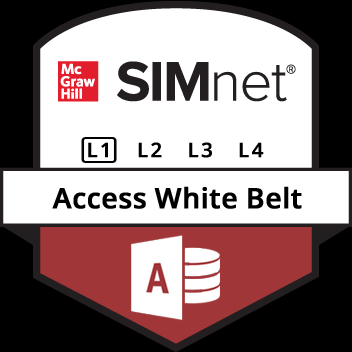
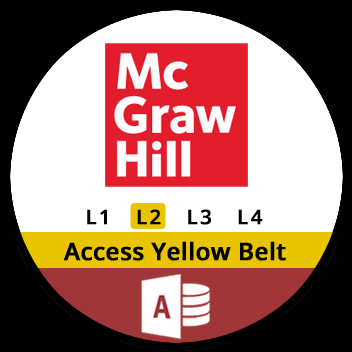
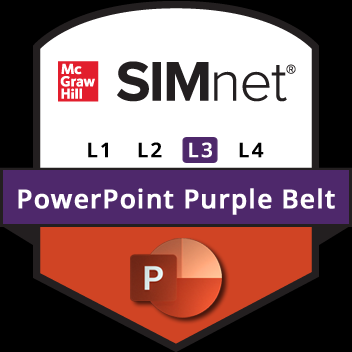
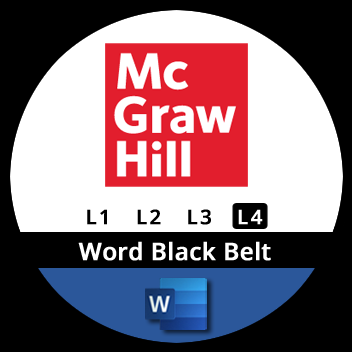
The SIMnet platform is optimized for students with both PCs and Macs and even supports learning on Chromebooks. Regardless of the platform, SIMnet has tools that will aid students in the learning process. It also contains materials to aid in the preparation for the Microsoft Office Specialist designation.
The Rate of Adoption of Digital Credentials
There is no way to know for certain the number of digital badges that have been earned since their inception. Based on the proliferation of digital badge implementations and using the baseline of a report indicating that over 43 million digital badges had been awarded through 2020, as well as a projected growth rate of 80% in that report, the number of digital badges awarded is likely well over 100 million today (Credential Engine, 2020). This is not a passing fad and is certainly a trend that will only increase.
McGraw Hill internal data indicates that we have issued the following number of badges from the SIMnet platform since 2019, the first full year that we had badges available. McGraw Hill is expected to issue its one-millionth badge in 2023.
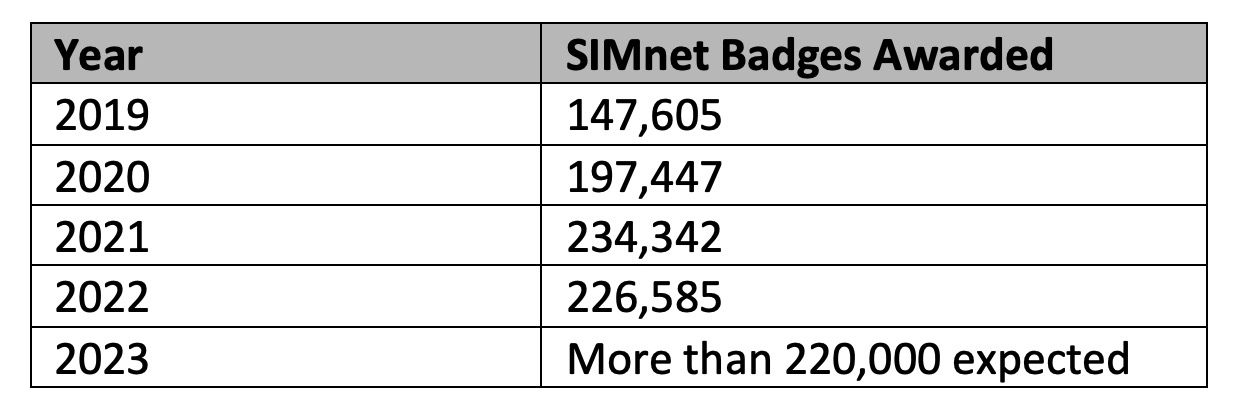
This level of activity in digital badge issuance is supported by other notable organizations. As an example, IBM has a well-documented mature digital badge program that they implemented in 2015 with great success. Their data indicates increased enrollments, engagement, and motivation of participants in their digital badge program (Leaser, 2019).
Career Readiness
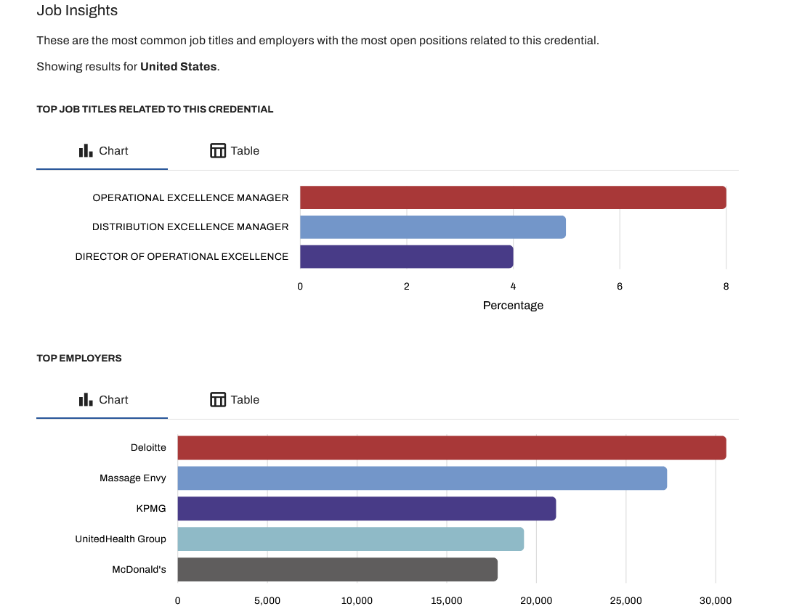
Career readiness is at the forefront of every educational institution today. In addition to having superior tools for skill development, cross-platform support, and digital badges, individuals also have access to valuable job insights when they earn a digital badge from SIMnet. A top objective of the SIMnet platform is career readiness and we are continually enhancing our offerings to position students for the workforce in the best way possible.
Institutions in the higher education space today are looking for ways to better prepare students. If you are looking for more information on ways to enhance your efforts toward career readiness, or just want more information about digital credentials, then feel free to reach out to your McGraw Hill representative.
Conclusion
Because it has well-developed digital badges, SIMnet provides an effective way to quickly implement digital badging in your environment. SIMnet’s digital badges have been used in high schools, colleges and universities, and even corporate settings. They are valued because they are backed by the branding of McGraw Hill, and powered by SIMnet, the fastest-growing platform for teaching Microsoft Office.
